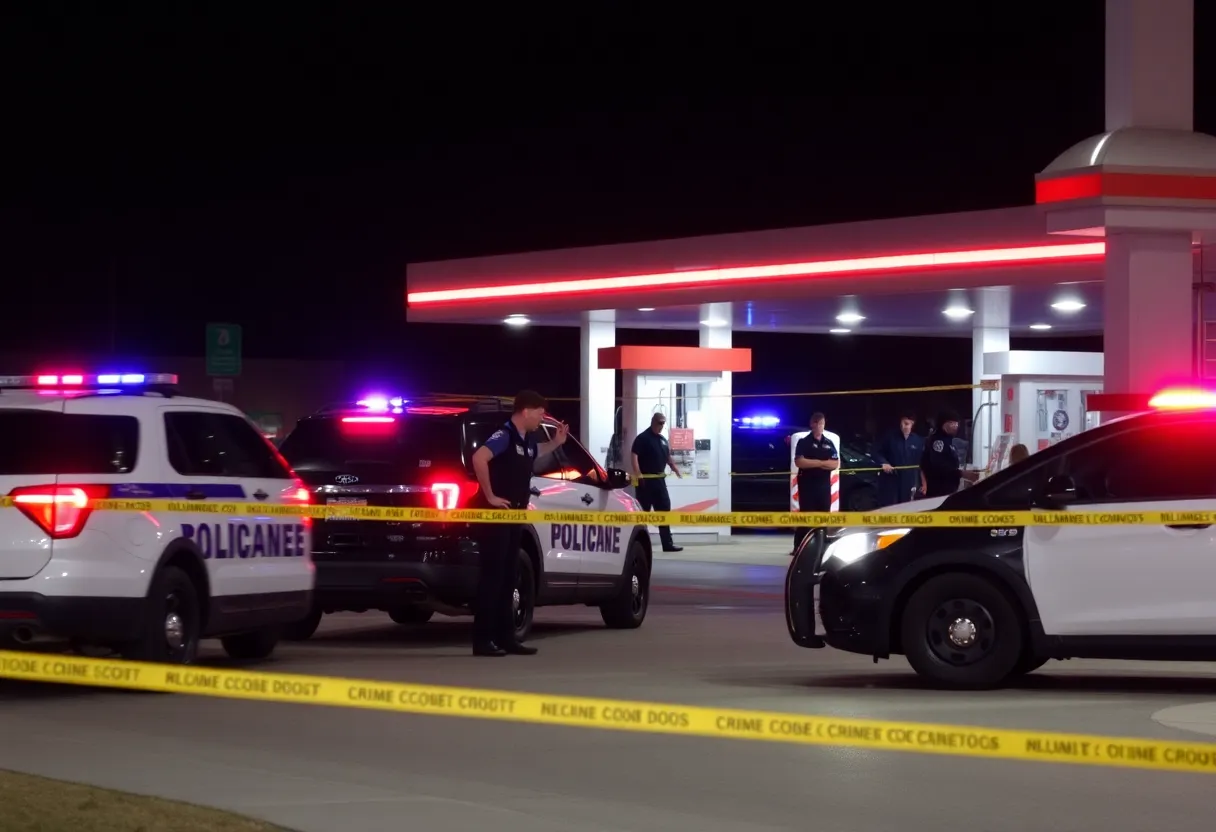News Summary
An extreme heatwave currently engulfs nearly half of the United States, impacting over 185 million individuals. Major cities face temperatures soaring into the mid-90s and low 100s, with the southeast region experiencing dangerously high heat indices. Specific areas in the Carolinas and Florida may see temperatures soaring up to 120°F, posing serious health risks. Although a cold front is predicted to bring some relief, the impacts of sustained extreme heat highlight the critical need for preparation and awareness of safety measures amidst soaring temperatures.
Extreme Heatwave Engulfs Eastern U.S.
This week, a dangerously extreme heatwave is affecting nearly half of the United States, putting over 185 million people in the spotlight of sizzling temperatures and high humidity.
Heatwave Across the Region
A broad swathe under heat advisories and warnings stretches from Nebraska to Long Island and from New Hampshire all the way down to northeast Texas. Major cities are bracing themselves as the temperatures climb into the mid-90s and low 100s.
Local Temperature Forecasts
For instance, Central Park in New York City is set to reach a blistering 96°F (36°C), which will feel more like 100°F when you factor in the humidity. Meanwhile, the Windy City of Chicago expects a temp around 91°F, but it’ll feel closer to 102°F with the heat index taken into account. The southeast region may be hit the hardest, with temperatures soaring between 105°F and 113°F (40.5°C to 45°C).
Southeast U.S. Heat Alert
Specifically, areas in the Carolinas and Florida are gearing up for exceptionally dangerous temperatures. In some parts of Mississippi and Louisiana, heat indices could even hit a staggering 120°F (49°C). That’s not just a number; those temperatures bring serious health risks, especially for vulnerable populations who may lack proper cooling systems.
Midwest in the Danger Zone
But it’s not just the south that feels the heat. The Midwest is also facing hazardous conditions, with temperatures making it feel between 97°F and 111°F (36°C to 44°C) across cities like Des Moines, St. Louis, Memphis, and more.
Heat Warnings and Risks
Heat risks are classified as level 4 out of 4 in Florida, Georgia, and the Carolinas, signalling significant danger. The broader level 3 heat risk extends throughout the eastern plains and into the mid-Atlantic.
Historic Heat Records
Just to illustrate the severity, Tampa recently hit an astonishing milestone, breaking daily temperature records with a high of 100°F (37.8°C).
Impact on Daily Life
This extreme heat isn’t expected to let up anytime soon. Cities like Charlotte, Savannah, and Jackson, Mississippi are gearing up for unrelenting warmth that will even linger into the nighttime hours, with lows only dipping into the hotter 70s.
A Hope for Relief
Relief should be on the horizon. A cold front is predicted to sweep in later this week, which may cool things down just in time for the weekend across the eastern U.S., while triple-digit temps might still persist in central regions.
Understanding the Risks
It’s important to note that extreme heat is more than just uncomfortable. It leads to more than 1,300 deaths each year in the U.S., according to the Environmental Protection Agency. In fact, excessive heat has become the leading cause of weather-related deaths here. With services strained—after hundreds of meteorologists left the National Weather Service recently—keeping track of these rapid changes might become even trickier.
FAQ Section
What areas in the U.S. are most affected by the heatwave?
The eastern U.S. is primarily affected, stretching from Nebraska to Long Island and down to northeast Texas, with particular dangers noted in the southeast, including the Carolinas and Florida.
What are the expected temperatures this week?
In cities like Central Park, temperatures will reach 96°F (36°C) and in the Midwest, cities will see feels-like temperatures between 97°F and 111°F (36°C to 44°C). Some southeastern areas might experience highs around 120°F (49°C) due to humidity.
How can people prepare for the extreme heat?
It’s vital to stay hydrated, avoid strenuous outdoor activities during peak hours, and seek air-conditioned environments. Keeping an eye on weather updates will also help to stay informed.
Key Features Overview
| Feature | Description |
|---|---|
| Impact Area | Eastern U.S., affects over 185 million people |
| Temperature Peaks | Actual temps in mid-90s to low 100s, heat indices reaching as high as 120°F (49°C) |
| Heat Risk Levels | Florida and southeast – level 4; broader areas level 3 risk |
| Long-Term Effects | Extreme heat linked to over 1,300 annual deaths in the U.S. |
Deeper Dive: News & Info About This Topic
- The Guardian: Extreme Heatwave Engulfs Eastern U.S.
- Wikipedia: Heat Wave
- ABC News: 130 Million People Brace for Sweltering Conditions
- Google Search: Extreme Heatwave 2025
- CBS News: Heat Maps and Warnings in the U.S.
- Google Scholar: Impact of Heat Waves
- Washington Post: U.S. Heat Wave Temperature Records
- Encyclopedia Britannica: Heat Advisories
- New York Times: Heat Wave Forecast for Southeastern U.S.
- Google News: Heat Alerts 2025
- NBC News: 170 Million Heat Alerts in the Southeast

Author: STAFF HERE AUGUSTA WRITER
The AUGUSTA STAFF WRITER represents the experienced team at HEREAugusta.com, your go-to source for actionable local news and information in Augusta, Richmond County, and beyond. Specializing in "news you can use," we cover essential topics like product reviews for personal and business needs, local business directories, politics, real estate trends, neighborhood insights, and state news affecting the area—with deep expertise drawn from years of dedicated reporting and strong community input, including local press releases and business updates. We deliver top reporting on high-value events such as Arts in the Heart Festival, Westobou Festival, and Masters Week. Our coverage extends to key organizations like the Augusta Metro Chamber of Commerce and Greater Augusta Arts Council, plus leading businesses in manufacturing and healthcare that power the local economy such as Textron Specialized Vehicles, Cardinal Health, and Nutrien. As part of the broader HERE network, including HEREAtlanta.com and HERESavannah.com, we provide comprehensive, credible insights into Georgia's dynamic landscape.





